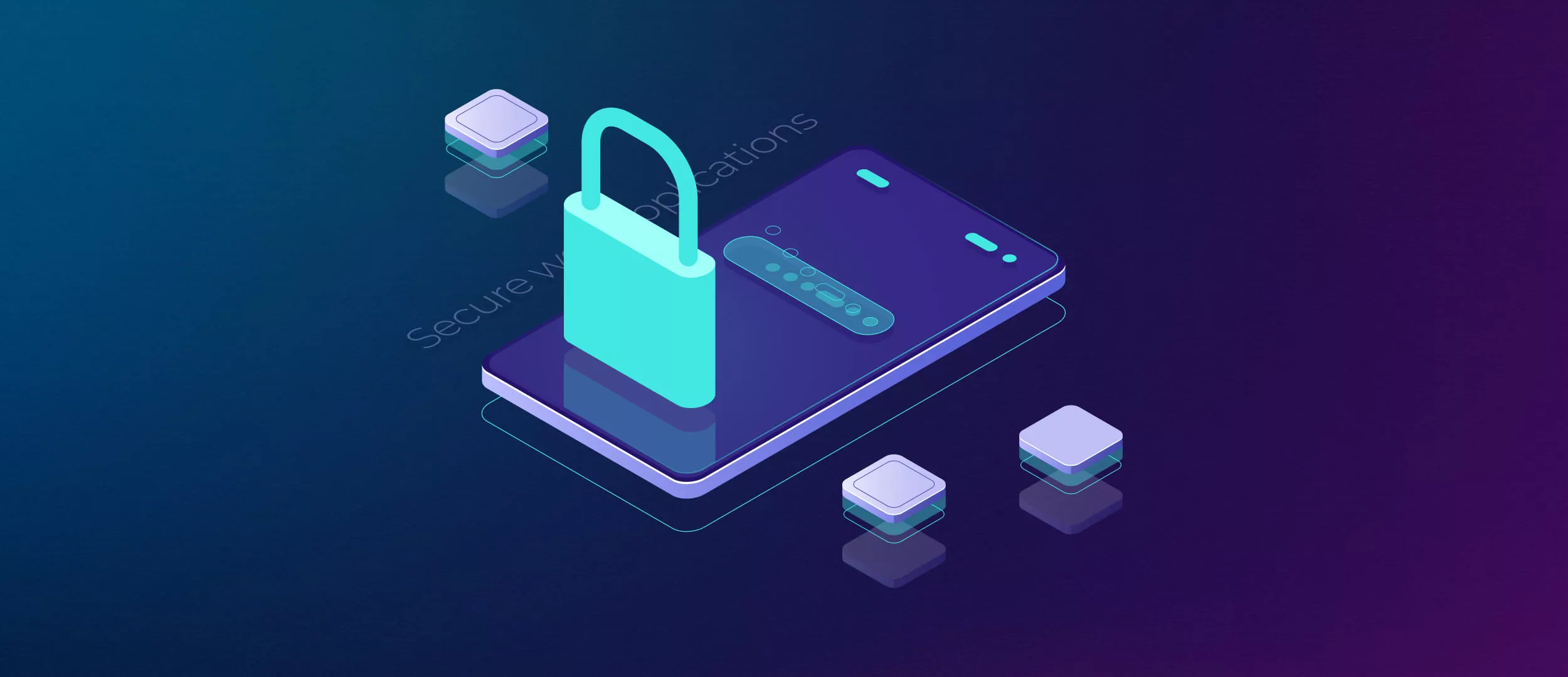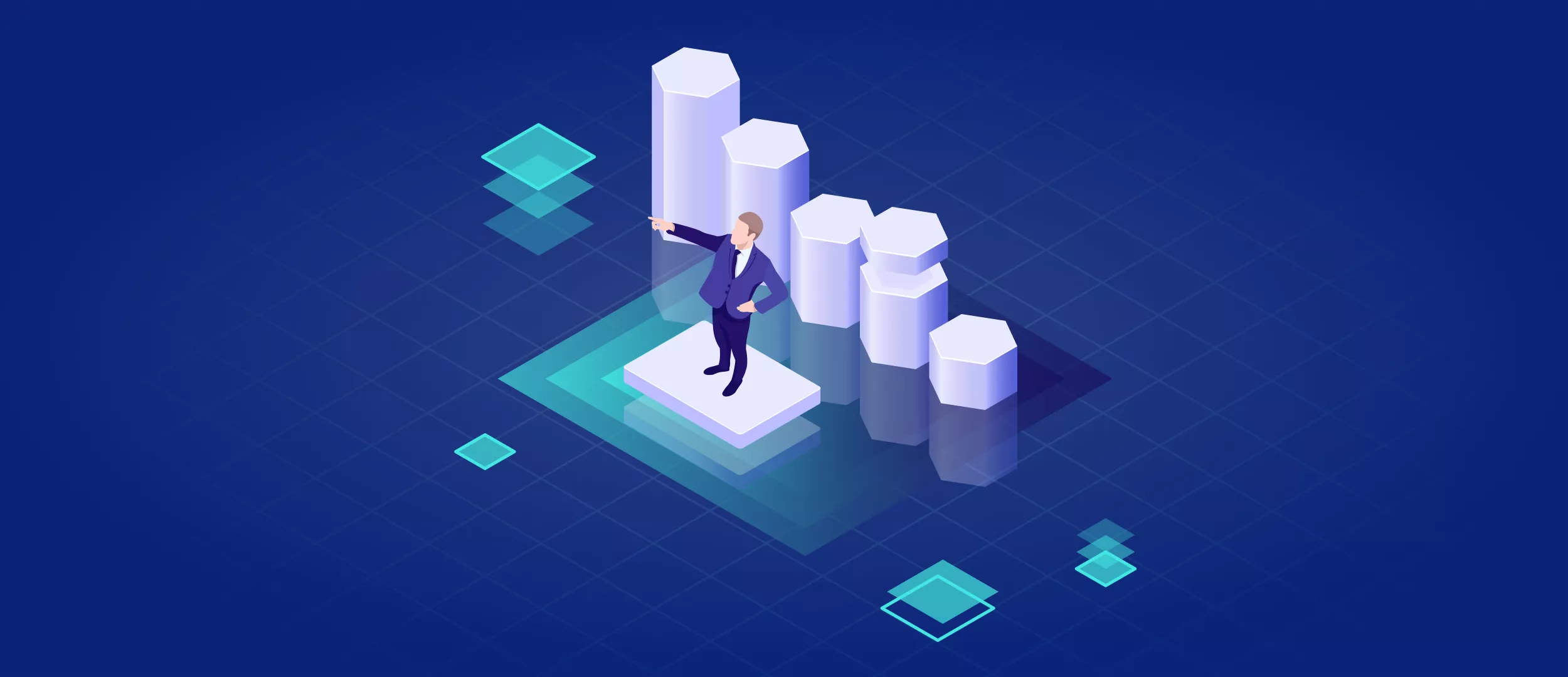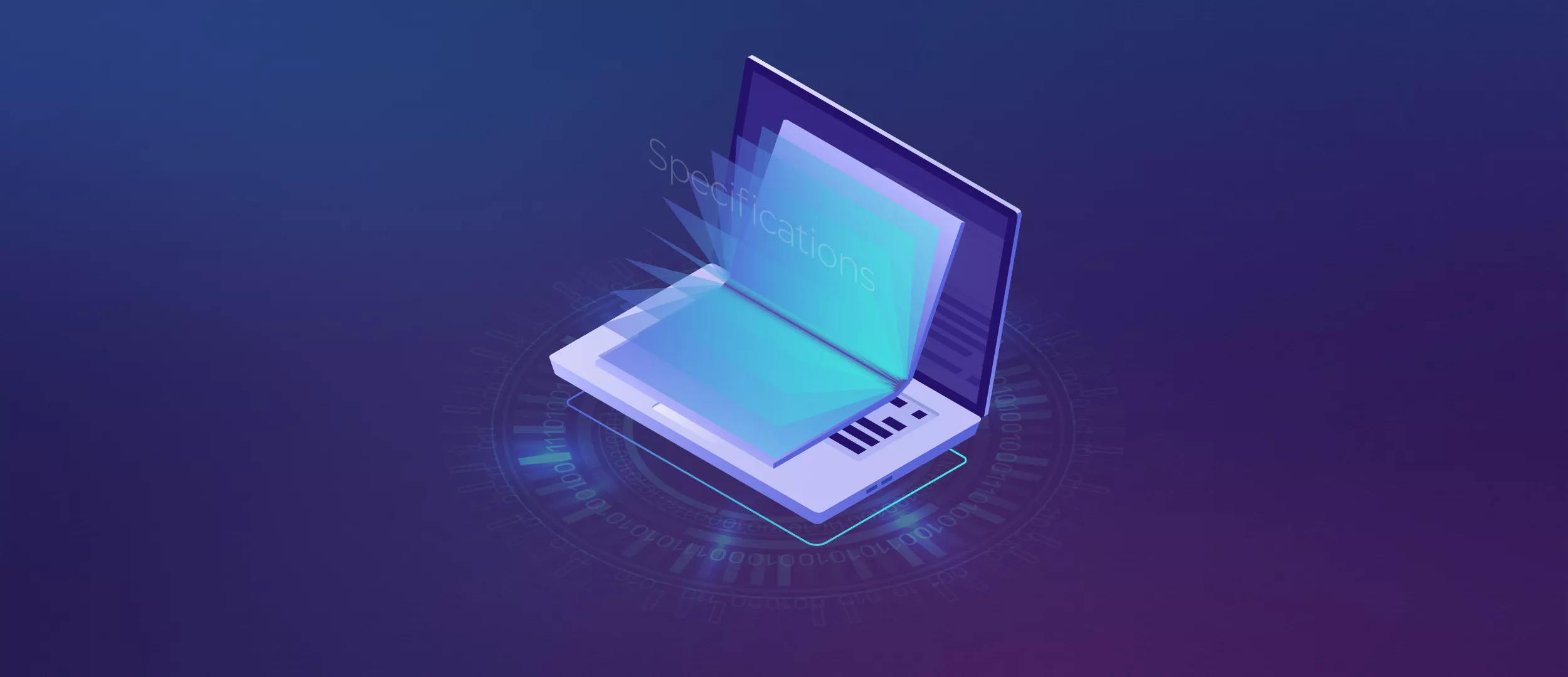
Software requirements specification is one of the most important documents in software development. You may wonder what is a software requirement specification. SRS describes the operation of the software, its functions, and loads. A software requirements specification describes functional and non-functional requirements. Often the document includes use cases that illustrate how the user will interact with the system.
What are Software Requirements Specifications?
A software requirements specification (SRS) is a description of the software system to be developed. It is modeled after the Business Requirements Specification. A software requirements specification sets out functional and non-functional requirements and may include a set of use cases that describe the user interactions that the software must provide to the user for an ideal user experience.
The document for software establishes the basis for an agreement between customers and contractors or vendors on how the software product should function (in a market-oriented project, these roles may be played by marketing and development departments). A software requirements specification is a rigorous assessment of requirements before more specific system design steps, and its goal is to reduce the number of subsequent iterations. It should also provide a realistic basis for evaluating product costs, risks, and schedules. When used correctly, software requirements specifications can help prevent a software project from failing.
Want a web app that does more?
Let's build a solution that's smart, sleek, and powerful.
Alina
Client Manager

The software requirements specification document lists sufficient requirements to develop a project. To derive requirements, the developer must have a clear and complete understanding of the products being developed. This is achieved through detailed and continuous interaction with the project team and the customer throughout the entire software development process.
The S R S document may be one of the deliverable descriptions of the contract data elements or may have other forms of organization-prescribed content.
SRS is usually written by a technical writer, system architect, or programmer.
Why Use an SRS Document?
Having a clear set of requirements ensures that the development team creates software that meets the needs of the client. SRS will help estimate the cost of work and cover the scope of the project. It also gives programmers an idea of the technology stack they will need and helps them plan their work.
But that's not all:
- Designers get insight into the design through SRS documents so they can tailor the design to the use case.
- Testers receive guidance on creating test cases that meet business needs.
- With the SRS you can build a clear presentation for investors.
- SRS is also important because it is a single source of information that prevents misunderstandings both between the project manager and the team and between the customer and the outsourcing company.
Software Requirements Specification vs. System Requirements Specification
In complex projects, it is customary to separate the system requirements specification from the requirements of the software. Although the terms "Software Requirements Specification" and "System Requirements Specification" are sometimes used interchangeably under the abbreviation SRS, the two concepts are not synonymous. A software requirements specification is much broader in scope than a system requirements specification.
A Software Requirements Specification (SRS) contains detailed descriptions of the software system to be developed. Software Requirements Specification is a detailed overview of the requirements needed to create the software.
A System Requirements Specification (SyRS) includes in-depth information about the requirements of a system. It focuses on what the software should do and how it should work.
The IEEE 1233 standard is one of the recognized guidelines for developing system requirements. And, as noted earlier, do not forget that the concept of a system, in the general case, covers software, hardware, and people. System engineering, in turn, is an independent and no less voluminous discipline than software engineering.
Functional vs Non-functional Requirements
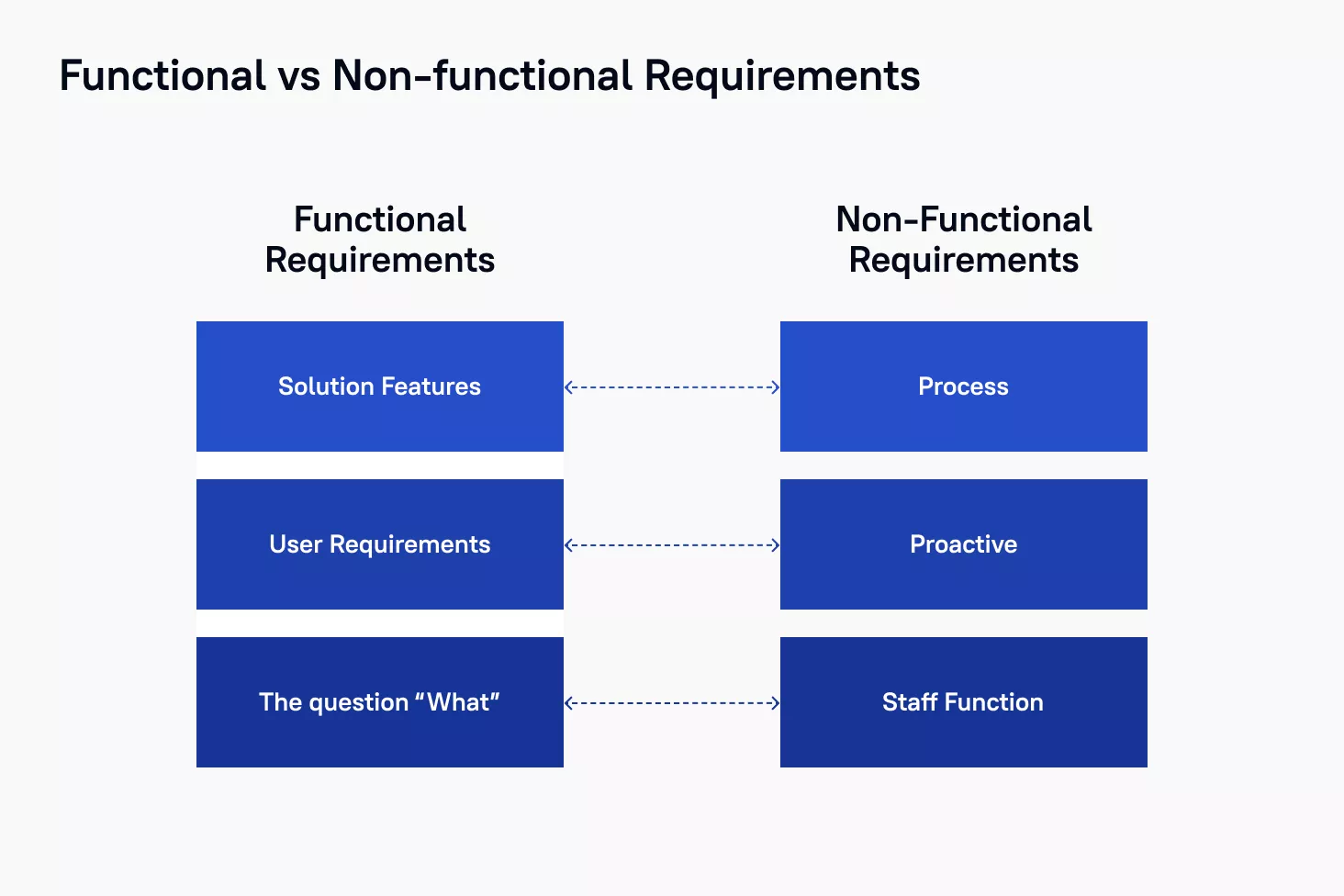
A functional requirement is a statement of how a system should behave. It defines what the system must do to meet the needs or expectations of the user. Functional requirements can be thought of as features that the user discovers. They are different from non-functional requirements, which define how the system should work internally (e.g. performance, security, etc.).
Functional Requirements
Functional requirements consist of two parts: function and behavior. A function is what the system does (for example, "calculate sales tax"). The behavior is determined by how the system does it (for example, "The system should calculate the sales tax by multiplying the purchase price by the tax rate").
Types of functional requirements
Here are the most common types of functional requirements:
- Business rules
- Certification Requirements
- Reporting Requirements
- Administrative functions
- Authorization levels
- Audit Tracking
- External interfaces
- Data management
- Legal and Regulatory Requirements
Non-functional (NFR) requirements
Non-functional requirements explain the limitations and limitations of the system being developed. These requirements do not affect the functionality of the application in any way. In addition, it is common practice to divide non-functional requirements into different categories, for example:
- User interface
- Reliability
- Security guard
- Performance
- Service
- Standard
- Sub-classification of non-functional requirements is good practice. This helps in creating a checklist of requirements that must be included in the developed system.
SRS Document Structure
You can find below the software requirement specification example document
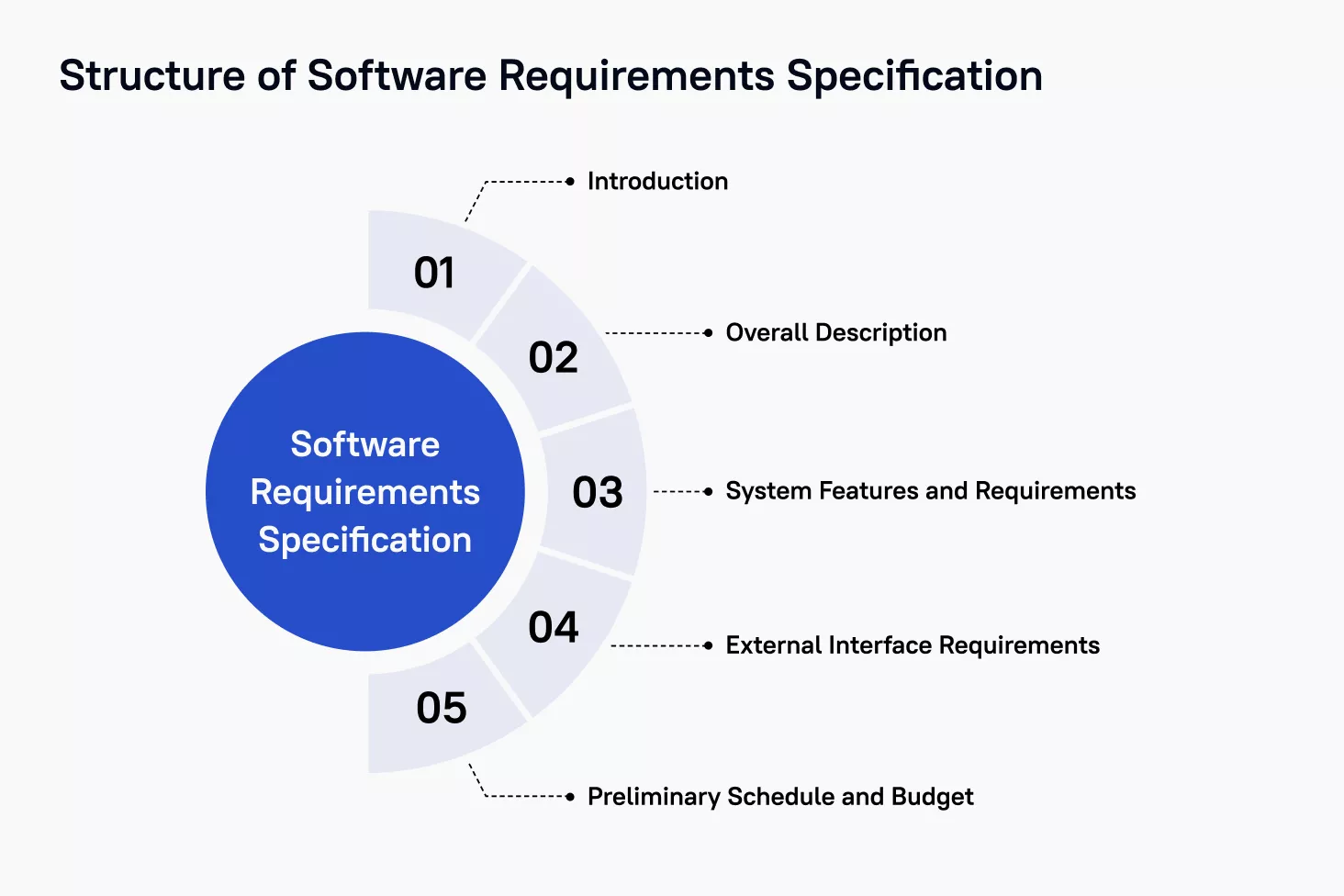
1. Introduction
In this section of the requirements document for software, we describe the application or product whose functionality will be described in the SRS.
Here we describe all obscure technical specification words or terms that can be in the SRS. Note that the description of a word cannot contain another obscure word. Try to describe in as much detail as possible the term that you use in simple and understandable language. Don't skimp on this section because the more things you write down, the easier it will be to design later.
2. Overall Description
In this section of the software requirement doc, we describe parts of the functionality at a high level. Each part of the functionality will be described in more detail in its section below. Here it is desirable to place a DFD diagram that will show the overall interaction of the system.
Here we also describe the environment in which the product will work. OS, compiler versions, databases, servers, software, hardware, and other things that are necessary for your product to work.
Description with restrictions. Such restrictions can be, for example, such things:
- Programming language, database
- Encoding standards
- Communication standards
- Restrictions that can be imposed by the business logic of the project
Here you describe the documentation needed for users of this product. Maybe it's a book on HTML if it's an HTML editor.
3. System Features and Requirements
We name the feature for the project and give it a unique identifier. For example server.html.editor.
System features\System feature X\Description and priority We describe in detail the features of the product. What is she for? What should I do? What is its execution priority?.. From this section, a person reading the CRS should immediately understand why this functionality is present in the system.
System features\System feature X\Stimulus/Response sequences Feature launch trigger. When does it start and how does it behave when it starts? For example, the HTML editor is shown when the user clicks on the menu link Open HTML Editor
System features\System feature X\Functional requirements A detailed and detailed description of the feature. We describe everything: how it works, how it reacts to errors, what should check, how to display data, how and where it saves, etc.
4. External Interface Requirements
Description of how the system will interact with the outside world. What APIs, how to get certain data, etc? Subsections serve to detail the requirements. What soft interfaces, "hardware" interfaces, communication interfaces, and so on?
Non-functional requirements
Not functional requirements. Some requirements cannot be described as some kind of feature, for example, security requirements.
Non-functional requirements\Performance requirements performance requirements. This is not a feature, but it imposes certain restrictions. Let's say the project database must withstand 1000 requests per second, and so on. These requirements lead to tremendous work on the optimization of the project.
Non-functional requirements\Software quality attributes Here we describe the requirements for code quality. What tests to use? What metrics to use to determine code quality?
Non-functional requirements\Security requirements Security requirements. If this is an HTML editor through which you can change something on the site, then it can be something like: through the HTML editor, it should not be possible to put the shell on the server, etc.
5. Preliminary Schedule and Budget
Preliminary Schedule: The section includes an initial stage of the project plan, including the tasks that need to be done, their interdependencies, and their start/stop dates. Preliminary Budget: The section includes an initial budget for the project, divided by the cost factor.
How to Write Software Requirements
As a rule, customers, and developers speak different languages. The client represents the external behavior of the system: what it will do and how end users will work with it. Programmers, on the other hand, think of a product in terms of its internal characteristics.
A business analyst helps them understand each other, he turns the needs of the client into requirements and the requirements into tasks for developers. Initially, this is done by software requirements writing (SRS). Below is the template requirements specification.
1. Create an outline based on your goals
The first step includes creating the outline for software requirements specification. You can create it by yourself or you may just use an online SRS template.
2. Define your Product’s Purpose
This section is crucial as it sets expectations that we will be implemented throughout the SRS.
Intended Audience and Intended Use
Define persons who will have access to the SRS and how they should use it. It includes developers, testers, and project managers, or also stakeholders in other departments, including sales, and marketing.
- Product Scope
- benefits
- objectives
- goals
This should link to business goals.
Definitions and Acronyms
You have to define the risks of the project in SRS in software engineering. What could go wrong? How can I deal with it? Who is in charge of the risk items?
For example, if the failure of a medical device can cause injury, this is one level of risk. With the occurrence level and the severity, we can create a strategy to minimize this risk.
3. Describe Your Product
The next step is to describe the product. Is it a new type of product? Is it an extension of a product you have already created? Will this be integrated with another product? For whom is it?
User requirements examples
Describe your target audience. Understanding who are your users and the user's needs is a crucial part of the process.
Assumptions and Dependencies
What assumption will be true? Are we assuming actual technology? Is the basis a Windows framework? You need to take assumptions to better understand when your product will fail or not operate flawlessly.
You should also note if your project is dependent on other factors. For example, are you taking a bit of software from an existing project?
4. Detail Your Specific Requirements
if you want your development team to meet the requirements in the right way, you must include all possible details.
Functional Requirements
Functional requirements are crucial to your product because they provide functionality.
You may also outline how your software can interact with other tools, which link to external interface requirements.
External Interface Requirements
External interface requirements are types of functional requirements. They are important when you work with embedded systems. They outline how your product will interact with other components.
Types of interfaces:
- User
- Hardware
- Software
- Communications
Nonfunctional requirements are as important as functional ones.
These include:
- Performance
- Safety
- Security
- Quality
5. Submit for Approval
After completing the SRS, you have to get approval from key stakeholders. This requires everyone to review the last version of the document.
Why do you need a Technical Writer?
“Why do I need a technical writer when there is a product developer who can easily create documentation for it?” is a question often asked by software executives. Those of them who, in the course of reasoning, conclude that a technical writer is not needed in the company and the developers will cope with all the documentation tasks are wrong.
Writing technical materials, such as software user manuals or research reports, requires a specific set of skills. Learning the theory and comprehending the practical experience associated with the profession of a technical writer takes time. By hiring an experienced technical writer, you get the following benefits:
- Clearer communications
- Reduced technical support costs
- Reduced documentation costs
- The main job of a technical writer is writing software
- requirements, and professional writers produce documentation faster than product developers.
How an SRS Depends on Project Management Approach
Whether it's developing new software, running a marketing campaign, or writing an SRS, project management makes it possible to succeed.
Waterfall
The most obvious way to make your project more manageable is to break it down into successive steps. It is on such a linear structure that traditional project management - a waterfall - is based. In this sense, it resembles a computer game - you cannot go to the next level without completing the previous one.
Agile
A flexible iterative-incremental approach to project and product management focused on the dynamic formation of requirements and ensuring their implementation as a result of constant interaction within self-organizing working groups consisting of specialists in various fields. There are many methods based on the ideas of Agile, the most popular of which is Scrum.
Scrum
Scrum combines elements of the classical process with the ideas of an agile approach to project management. The result - the combination of flexibility and structure.
Following the precepts of Agile, Scrum breaks the project into parts that can be immediately used by the Customer to obtain value, called the product backlog. To make sure that the project meets the requirements of the Customer, which tend to change over time, before the start of each Sprint, the project scope that has not yet been completed is re-evaluated and changes are made to it. Everyone is involved in this process - the project team, the Scrum Master, and the Product Owner. And everyone is responsible for this process.
Conclusion
Anyone who has worked on a software project knows how quickly requirements can accumulate and how difficult they are to manage. The Software Requirements Specification provides a comprehensive description of the software product being developed and keeps all contributors on the same page. With today's requirements management tools, writing a software requirements specification is a piece of cake, and the benefits are impossible to ignore.
The SRS is usually signed at the end of the requirements development phase, the earliest stage in the software development process. If you would like to start a project, just contact us, a free consultation is available.

